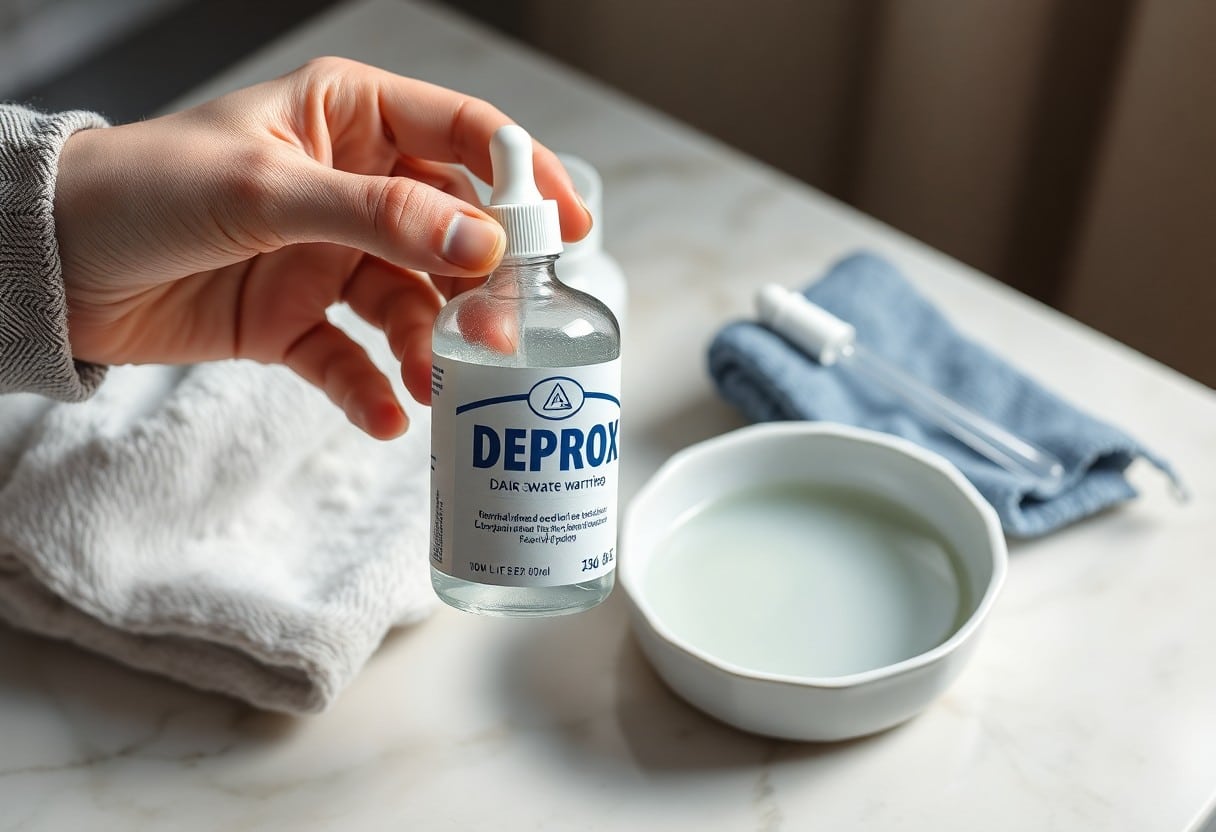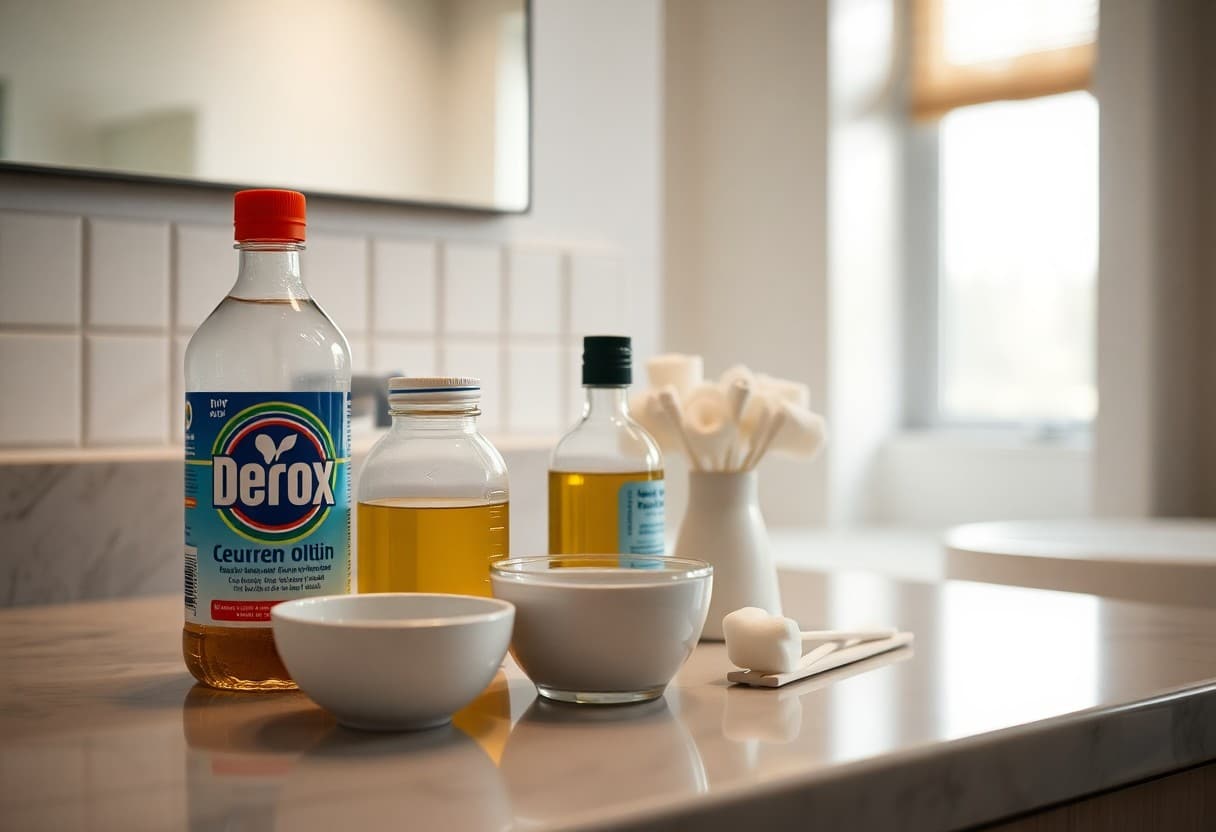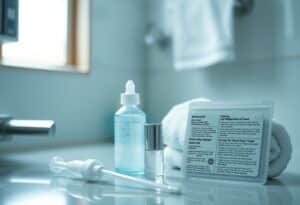Over time, earwax can build up and cause discomfort or hearing issues, making it imperative for you to explore cerumenolytic agents. These products, such as Debrox and various DIY methods, aid in softening and removing earwax effectively. In this post, you will learn about different cerumenolytic options, their uses, and how to safely incorporate them into your ear care routine to maintain optimal ear health.

Key Takeaways:
- Cerumenolytic agents, such as Debrox, facilitate the softening and removal of earwax buildup.
- DIY methods for cerumen removal can include mineral oil and saline solutions, but caution is advised to avoid injury.
- Consultation with a healthcare professional is recommended before using cerumenolytic agents, especially for those with existing ear conditions.
The Science Behind Earwax and Cerumenolytics
The Function of Earwax in Ear Health
Earwax plays a vital role in maintaining ear health by trapping dust, debris, and microorganisms, preventing them from reaching the delicate structures of the ear. It also acts as a natural lubricant, reducing dryness and protecting the ear canal’s skin from irritation. Your body continuously produces earwax to ensure a healthy ear environment, aiding in cleaning and protection.
Cerumenolytic Agents: What They Are and How They Work
Cerumenolytic agents are substances designed to soften and break down earwax for easier removal. These agents often contain ingredients like mineral oil, hydrogen peroxide, or carbamide peroxide. When applied, they penetrate the earwax, facilitating its natural expulsion from the ear canal or allowing for gentle irrigation.
Some cerumenolytic agents, such as Debrox, use carbamide peroxide, which releases oxygen when in contact with earwax, creating a foaming action that helps dislodge impacted cerumen. Others, like mineral oil, work by lubricating and softening the wax, making it easier to clear. Options vary from over-the-counter products to home remedies, each with unique formulations targeting different types of earwax buildup. Always follow the instructions for safe and effective use to avoid irritating your ears or causing further blockage.
Debrox and Beyond: Commercial Cerumenolytic Solutions
Ingredients and Mechanisms of Action in Debrox
Debrox primarily features carbamide peroxide, which serves as a gentle surfactant and foaming agent. This ingredient works by breaking down earwax into smaller particles, facilitating their natural expulsion from the ear canal. By releasing oxygen when it decomposes, it also helps to soften impacted cerumen, reducing discomfort and improving hearing clarity.
Comparing Leading Brands: A Deep Dive into Alternatives
Several commercial cerumenolytic agents provide unique alternatives to Debrox, each designed with distinct ingredients and mechanisms. Too often, consumers overlook options like Murine and E-R-O, which also aim to address earwax buildup effectively. Each brand utilizes different formulations, such as olive oil and saline solutions, ensuring a range of choices for your specific needs.
Comparison of Leading Cerumenolytic Brands
| Brand | Key Ingredients |
|---|---|
| Debrox | Carbamide peroxide |
| Murine | Mineral oil and saline |
| E-R-O | Hydrogen peroxide |
| Ototek | Mineral oil |
Exploring alternative brands reveals significant variation in active ingredients and effectiveness. For instance, Murine incorporates mineral oil and saline to soften wax, making it suitable for sensitive ears. In contrast, E-R-O’s hydrogen peroxide formulation provides a more vigorous cleaning method. Ultimately, your choice should align with your ear health, wax consistency, and any past reactions to similar treatments.
In-Depth Comparison of Active Ingredients in Alternatives
| Brand | Mechanism of Action |
|---|---|
| Debrox | Foaming action to break down cerumen |
| Murine | Soften wax for easier removal |
| E-R-O | Oxidizing agent removes and dissolves wax |
| Ototek | Mineral oil lubricates and loosens wax |

Natural Remedies: DIY Cerumenolytic Agents
Essential Oils and Their Efficacy
Essential oils, such as olive oil, tea tree oil, and lavender oil, can serve as effective cerumenolytic agents. Their natural properties help soften earwax, making it easier to remove. For instance, a few drops of olive oil in the ear can help lubricate and dissolve wax, while tea tree oil’s antifungal properties provide additional benefits. Use these oils thoughtfully, ensuring they’re properly diluted before application.
Household Solutions: Safe or Risky?
Household remedies like hydrogen peroxide, vinegar, and warm water are commonly considered for earwax removal. While they may provide some relief, improper use can lead to irritation or infection in your ear canal. Risks increase significantly if you have pre-existing conditions such as a perforated eardrum, making medical advice vital before attempting these solutions.
Household solutions often attract attention for their accessibility and low cost, but using substances like hydrogen peroxide or vinegar in your ears can present risks. Incorrect concentrations or improper application methods can cause burns or irritation, particularly in sensitive individuals. Additionally, introducing water into the ear canal can lead to infections if you have any perforations or previous ear issues. Evaluate your situation carefully and consult a healthcare professional before trying these methods to ensure safety and effectiveness.
The Efficacy Conundrum: How Well Do Cerumenolytics Work?
Clinical Evidence Supporting or Disputing Their Use
Numerous studies have evaluated the effectiveness of cerumenolytic agents, revealing mixed results. While some research indicates that agents like Debrox and hydrogen peroxide successfully soften or dissolve earwax, other clinical trials suggest variability in treatment outcomes. Effectiveness can depend on factors such as the type of cerumenolytic used, the severity of wax buildup, and how frequently the treatment is applied. A meta-analysis found that using these agents can lead to significant wax removal in 70% to 80% of cases, but individual results may vary widely.
Common Misconceptions and Myths
Several myths surround cerumenolytic agents, often leading to misunderstandings about their use. Many people believe that all earwax removal products are equally effective, which is not true. Some may think that over-the-counter solutions are entirely safe for everyone, ignoring potential sensitivities or allergies. Furthermore, there’s a misconception that excessive cleaning is necessary; in reality, the ears often require minimal intervention to maintain health.
One prevalent myth suggests that cerumenolytics can entirely eliminate the need for professional ear cleaning. While these agents can be effective for many, a significant portion of individuals with impacted cerumen may still require clinical intervention. Additionally, some individuals mistakenly think that natural solutions, such as olive oil, are completely safe for everyone; however, this can cause irritation in some cases. Understanding these misconceptions is necessary for effective ear care and selecting appropriate treatments.
The Do’s and Don’ts of Ear Cleaning Practices
Recommended Practices for Safe Ear Maintenance
For optimal ear health, consider cleaning your ears only as needed. Use a soft cloth to wipe the outer ear, avoiding cotton swabs that can push wax further in. Over-the-counter drops can soften earwax, allowing it to exit naturally. Consult a healthcare professional for regular check-ups, especially if you experience discomfort, hearing loss, or have a history of ear problems.
Common Mistakes That Could Harm Hearing
Many people mistakenly believe that using cotton swabs is a safe way to clean their ears, but this practice often leads to impacted wax. Other common errors include using sharp objects to remove wax and relying too heavily on home remedies without professional guidance. These practices not only risk injury but can also exacerbate earwax buildup, leading to complications.
Impacted earwax can cause muffled hearing, discomfort, and even tinnitus. Inserting objects like hairpins or Q-tips into the ear canal often pushes wax deeper, creating blockages. Additionally, excessive cleaning can strip the ear of its natural wax, resulting in dryness and irritation. Knowing when to seek professional help is key, especially if you notice persistent symptoms, as untreated wax buildup may lead to infections or hearing loss.
Special Considerations: When to Seek Professional Help
Signs That Over-the-Counter Solutions Are Inadequate
If you experience persistent discomfort, pain, or hearing loss despite using over-the-counter cerumenolytic agents, it’s time to consult a healthcare professional. Symptoms such as ringing in the ears, a feeling of fullness, or discharge may indicate that self-treatment isn’t effective and could lead to further complications.
Understanding Professional Cerumen Removal Options
Several methods exist for professional cerumen removal, each tailored to your specific needs. Options include manual extraction using specialized instruments, suction techniques, or irrigation with warm water. A healthcare provider will assess your ear health and choose the most suitable approach.
Manual extraction, often performed by an audiologist or ENT specialist, utilizes tools like curettes and forceps. This method allows for precise removal of earwax without damaging the delicate ear canal. Suction, on the other hand, is efficient for dislodging impacted wax and is especially beneficial for those who find irrigation uncomfortable or risky. Irrigation can be done in a clinical setting to flush out wax with a gentle stream of water, often combined with a cerumenolytic agent for enhanced effectiveness. Each method has its advantages, depending on the severity of the blockage and your individual comfort level.
Navigating the Market: What to Look for in a Cerumenolytic Agent
Ingredients to Trust and Avoid
Look for cerumenolytic agents containing safe and effective ingredients like carbamide peroxide and glycerin. These substances effectively soften and dissolve earwax without causing irritation. Avoid products with harsh chemicals such as alcohol or hydrogen peroxide in high concentrations, which can damage sensitive ear tissue and exacerbate ear problems.
How to Read Labels: Understanding Product Claims
Assessing product labels requires a discerning approach. Look for specific claims supported by scientific evidence, such as “clinically tested” or “proven effective.” Some products may tout non-stick or anti-bacterial properties, which may not necessarily enhance cerumen removal but could mislead consumers about effectiveness. Always check for the active ingredients and any disclaimers regarding potential side effects.
Labels can often be misleading, so familiarity with terminology used in claims is beneficial. Terms like “medical-grade” or “suitable for all ages” might not guarantee safety or efficacy. Additionally, terms like “all-natural” could obscure the presence of ineffective or harmful components. Scrutinize the ingredient list and consider seeking products that have undergone independent testing for added assurance of quality and effectiveness.
Summing up
The information provided on cerumenolytic agents, including Debrox and various DIY solutions, equips you with the knowledge to manage earwax buildup effectively. By understanding how these agents work and their appropriate uses, you can make informed decisions about your ear care. Always consider consulting a healthcare professional for personalized advice, ensuring that your approach to earwax removal is both safe and effective.
FAQ
Q: What are cerumenolytic agents?
A: Cerumenolytic agents are substances used to soften and break down earwax (cerumen) for easier removal. They facilitate the natural drainage of earwax from the ear canal, preventing impaction and discomfort.
Q: How does Debrox work as a cerumenolytic agent?
A: Debrox contains carbamide peroxide, which releases oxygen when it contacts earwax. This effervescent action helps to soften the wax, making it easier to eliminate through natural processes or irrigation.
Q: Are there natural or DIY alternatives to cerumenolytic agents?
A: Yes, common DIY alternatives include using mineral oil, olive oil, or hydrogen peroxide diluted with water. These substances can help soften earwax, allowing it to clear from the ear canal more easily.
Q: Are there any side effects associated with cerumenolytic agents?
A: Possible side effects may include temporary irritation, itching, or a feeling of fullness in the ear. If symptoms persist or worsen, it is advisable to consult a healthcare professional.
Q: How often can cerumenolytic agents be used safely?
A: Usage frequency varies by product; however, generally, cerumenolytic agents like Debrox can be used once every 1 to 2 days as needed. Always follow product instructions or consult a healthcare provider for personalized recommendations.



